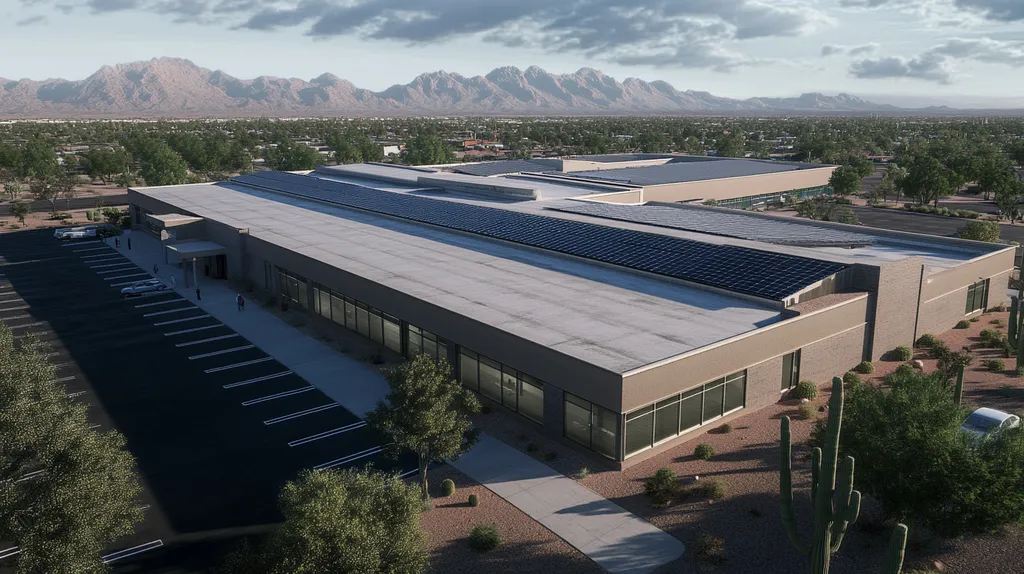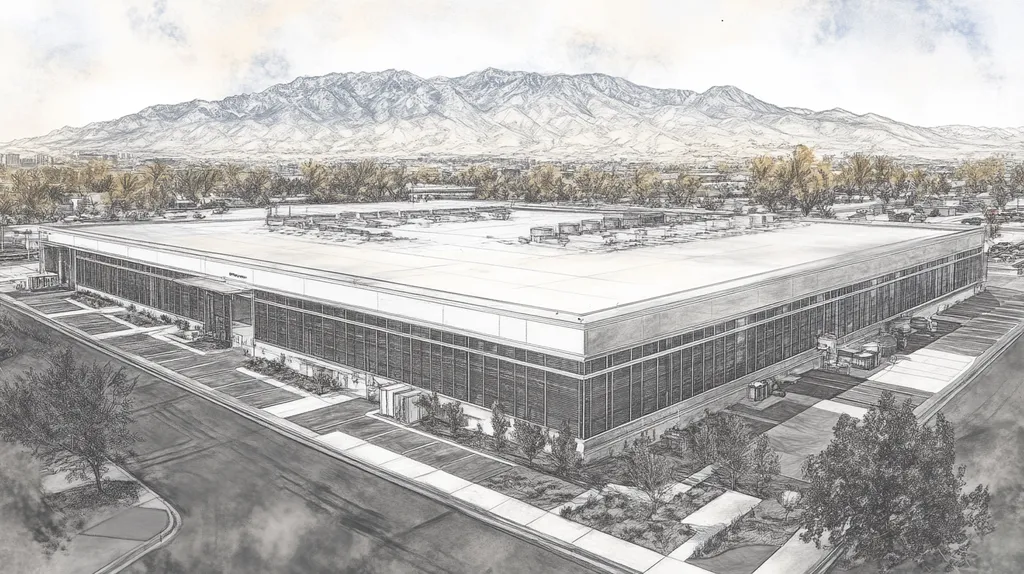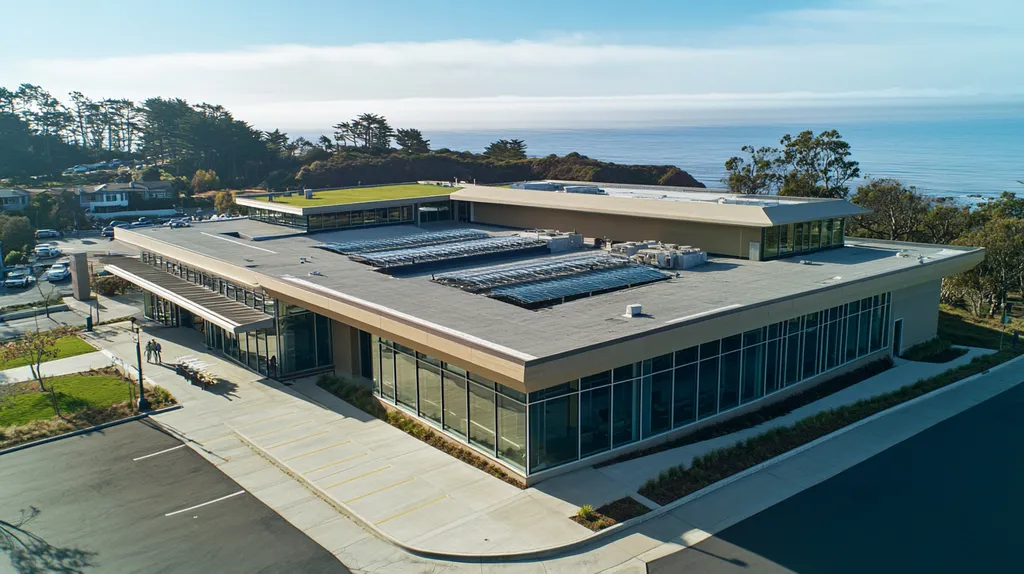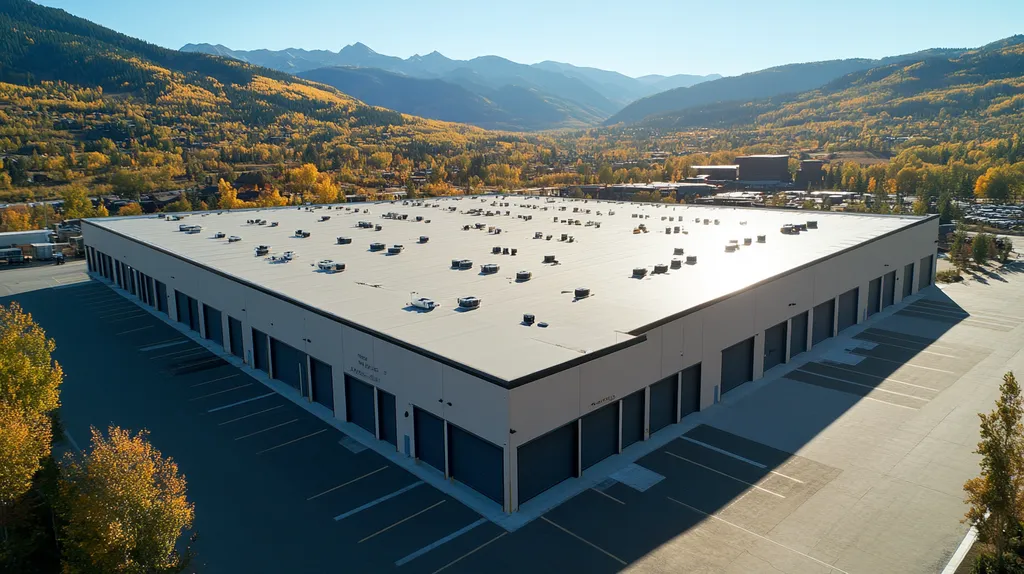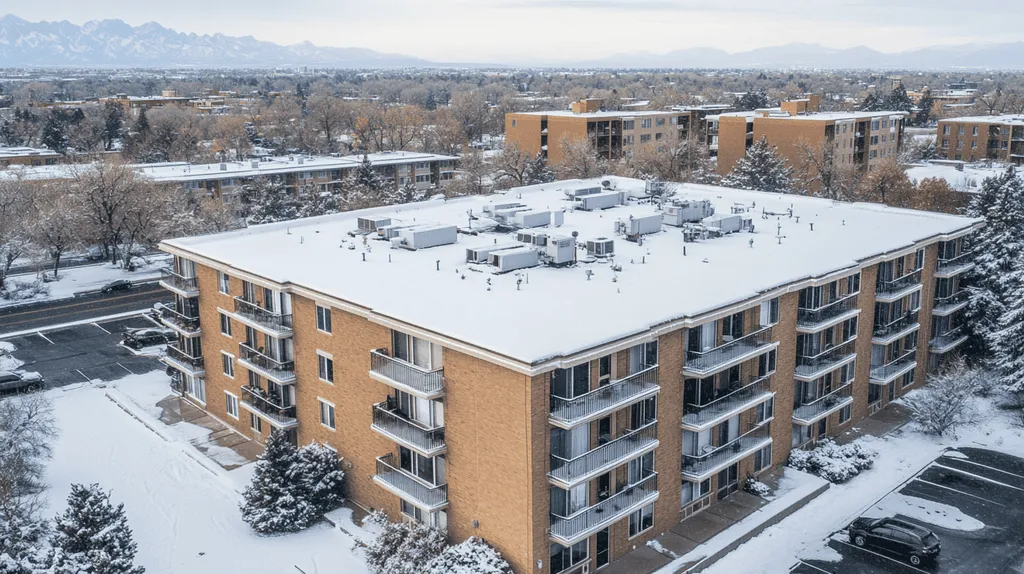In today’s industrial landscape, over 60% of facility shutdowns are linked to roofing failures, making material selection a critical decision for property owners and managers. The wrong choice can lead to millions in damages, production delays, and compromised worker safety.
Modern industrial roofing materials offer unprecedented opportunities to enhance building performance, from energy-efficient membranes that cut cooling costs by 30% to fire-resistant systems that exceed safety standards.
This comprehensive guide examines the essential factors in selecting industrial roofing materials, from fundamental concepts through optimization strategies, empowering decision-makers to make informed choices that protect their facilities and bottom line.
SECTION 1: FUNDAMENTAL CONCEPTS
The choice of roofing materials can significantly influence the durability, efficiency, and safety of an industrial building. With over 90% of property managers citing leaks as a major concern, selecting the right roofing material is essential to avoid hefty repair bills and potential operational downtime. Factors such as climate, building codes, and the characteristics of different materials are critical in making this vital decision.
Roofing Material Types and Characteristics
Understanding the variety of roofing materials available is crucial for industrial property owners. Common choices include thermoplastic polyolefin (TPO), ethylene propylene diene monomer (EPDM), and metal roofing. Each option has unique attributes that affect durability, insulation properties, and installation costs.
For example, TPO is renowned for its energy efficiency and reflective qualities, making it an excellent choice for warmer climates. EPDM, on the other hand, excels in weather resistance, particularly suited for areas with extreme temperature swings. While metal roofs may require a higher initial investment, they offer long-lasting value through their durability and low upkeep needs.
Additionally, important aspects like the weight of the roofing system and the structural support of the building must not be overlooked. Heavier materials may necessitate reinforcing the structure, resulting in increased project costs.
Ultimately, selecting the right roofing material is about striking the right balance between performance and budget while ensuring long-term reliability and satisfaction.
Climate and Weather Considerations
Climate is a critical factor in choosing roofing materials for industrial properties. In regions prone to heavy rain, snow, or high winds, it’s essential to select materials that can withstand these harsh conditions. For example, flat roofs may struggle with water pooling in rainy areas, necessitating effective drainage solutions.
Furthermore, areas experiencing extreme temperature variations face their own challenges. Cold regions require roofing systems with excellent insulation to minimize heat loss, while hot climates benefit from reflective materials that can help reduce cooling costs.
By understanding local weather patterns, property managers can proactively choose materials designed to withstand specific climate challenges, enhancing the roof’s lifespan and preventing premature failures.
Building Code Compliance
Adhering to local building codes is essential when it comes to industrial roofing. These regulations are designed to ensure safety, durability, and proper installation methods. Neglecting to comply with these codes can lead to penalties and increased liability if problems arise.
Different regions have unique requirements that reflect their environmental conditions and safety standards. For instance, states that are more vulnerable to hurricanes often require higher wind resistance ratings for roofing materials. Similarly, insulation standards can vary greatly based on the local climate.
It’s crucial for property owners to collaborate with reputable roofing contractors who have a deep understanding of local regulations. This collaboration ensures that the selected materials not only meet safety standards but also follow best practices, ultimately safeguarding the roof’s long-term integrity.
SECTION 2: SYSTEM COMPONENTS
Choosing the right materials for industrial roofing is not just important; it’s imperative. A single misstep in material selection can lead to substantial financial losses and operational interruptions. For instance, improper insulation can inflate energy expenses by as much as 30%. By understanding system components, property owners can make informed decisions that will enhance durability, sustainability, and overall building performance.
Structural Roof Deck Materials
The roof deck lays the groundwork for any roofing system, both literally and figuratively. Materials like steel and concrete are common choices, each offering unique strengths. Steel decks boast excellent load-bearing capabilities, while concrete provides superior fire resistance.
Choosing the appropriate deck material is essential; inferior selections can lead to serious structural failures. For example, reinforced concrete decks are adept at handling heavy equipment and foot traffic, making them a top pick for industrial environments.
Many deck options come pre-insulated, streamlining installation and improving energy efficiency. This combination not only cuts down on labor costs but also contributes to lower ongoing energy expenses—leading to significant long-term savings.
Ultimately, selecting the right roof deck materials ensures a solid foundation and helps prevent costly issues down the line.
Vapor Barriers and Insulation
Vapor barriers and insulation play a critical role in moisture control and energy efficiency. Without effective vapor barriers, condensation can form, leading to mold and structural degradation over time.
High-quality insulation is essential for maintaining stable indoor temperatures and curbing energy expenses. Polyisocyanurate insulation, known for its high R-value and moisture resistance, is often cited as a preferred option.
By implementing a robust vapor barrier alongside effective insulation systems, properties can see energy savings of 20% or more. This not only reduces costs but also enhances the comfort of the building’s occupants.
The right combination of insulation and vapor barriers can significantly prolong the life of an industrial roofing system, ultimately safeguarding the investment.
Roof Membranes and Cover Boards
Roof membranes function as the primary barrier against environmental elements. Options like TPO, PVC, and EPDM are celebrated for their durability and weather resistance. Each membrane type offers distinct advantages tailored to the specific needs of industrial facilities.
Cover boards provide an extra layer of protection, boosting the overall resilience of the roofing system. They can enhance thermal efficiency and impact resistance, promoting longer-lasting performance.
By choosing high-quality roof membranes along with reliable cover boards, property owners can benefit from extended warranties and reduced maintenance needs, translating into significant cost advantages.
A well-selected combination of roofing membranes and cover boards will ensure the industrial roof remains functional and cost-effective for years, reducing the likelihood of premature replacements.
SECTION 3: IMPLEMENTATION METHODS
When it comes to industrial roofing, selecting the right materials is just the first step. Effective implementation techniques are critically important to ensuring long-term durability and performance. Poorly installed roofing systems, whether single-ply membranes or metal roofs, can quickly lead to costly leaks and operational disruptions. This section delves into essential installation methods that will help maximize the effectiveness of industrial roofs.
Installation Techniques for Single-Ply Membranes
Single-ply membranes such as TPO and EPDM require precise installation to achieve optimal results. To prevent water leakage, seams must be carefully aligned and securely fused. Manufacturers often advocate for thermal welding, which forms a stronger bond compared to traditional adhesives.
Field personnel should utilize calibrated tools to ensure that the welding temperature remains consistent throughout the installation. Inadequate temperatures can create weak seams, jeopardizing the roof’s integrity. Regular inspections during and after installation can catch potential issues early, allowing for corrective action to be taken.
Before laying down the membrane, it’s crucial to ensure that the substrate is clean and dry. Moisture or debris can weaken adhesion and lead to premature failures. A well-prepared surface lays the groundwork for the success of any roofing project.
Finally, effective drainage must not be overlooked. Poor drainage on flat roofs can lead to water accumulation, ultimately compromising the membrane. A well-designed and installed drainage system can significantly enhance the lifespan of the roofing system.
Metal Roofing Installation Best Practices
Metal roofing is acclaimed for its resilience, but meticulous installation is necessary to fully capitalize on these benefits. Starting with high-quality materials like galvanized steel or aluminum is essential for industrial applications.
Sealing all joints and fasteners properly is critical to prevent water infiltration. Using sealants or gaskets effectively blocks moisture ingress, while neglecting this step can lead to rust and corrosion. Additionally, skilled installation practices must be followed to avoid buckling or warping, which can affect both appearance and functionality.
It’s also vital to adhere to manufacturer guidelines for fastener placement. Incorrectly spaced fasteners can lead to issues like wind uplift or metal fatigue over time. As a rule of thumb, one fastener should be placed every two feet, adjusted based on the building’s specific location and design.
Moreover, incorporating a roof ventilation system can boost energy efficiency and extend the lifespan of the roofing materials. Proper airflow helps minimize thermal expansion stresses, averting warping and other complications.
Adhesives and Fastening Systems
The choice of adhesives and fastening systems is critical to the success of an industrial roofing project. Often underestimated, the right products can significantly enhance bonding and reduce the risk of leaks, while subpar options can lead to costly failures.
For single-ply membranes, solvent-based adhesives generally provide superior bonding strength compared to water-based alternatives. Mechanical fastening methods also ensure secure attachment to the substrate, helping to maintain integrity in extreme weather conditions.
Considering local climate is essential when selecting fasteners. For instance, areas near the coast may require stainless steel fasteners to prevent corrosion. Insulated fastening systems can further improve thermal performance and are especially beneficial during temperature extremes.
Regular maintenance checks should include a thorough evaluation of adhesives and fasteners. Environmental factors can degrade these materials over time, and timely repairs can prevent larger issues, ultimately extending the lifespan of the roofing system.
SECTION 4: MAINTENANCE REQUIREMENTS
The maintenance of industrial roofs isn’t just a task; it’s a crucial investment in the building’s longevity and efficiency. Ignoring maintenance can lead to severe problems such as leaks and structural deterioration, resulting in expensive repairs and operational disruptions. Research shows that roofs with regular upkeep can last 20-30% longer than neglected ones. This section examines essential maintenance practices, focusing on proactive inspections, effective water management, and the application of protective coatings.
Regular Inspection and Repair
Conducting regular inspections is a proactive approach to identifying potential problems before they escalate. Facility managers should aim to schedule these inspections at least twice a year, ideally in spring and fall. By checking for signs of wear, damage, or debris, inspections can highlight critical issues like cracked seams or loose flashing.
If problems are spotted, timely repairs are essential. Left unresolved, small leaks can develop into significant structural issues. For instance, a seemingly minor puncture in a roof membrane can lead to extensive water damage over time.
Keeping detailed documentation of inspections and repairs is also crucial. This record not only helps track the roof’s condition but can also be beneficial for warranty validation. Facility managers should ensure they maintain comprehensive notes on every inspection and repair conducted.
In some cases, hiring a professional roofing contractor for inspections may offer a more thorough evaluation. Experts can pinpoint issues that may go unnoticed by property managers, ensuring the roof remains robust and functioning well.
Preventing Ponding Water and Leaks
Ponding water can wreak havoc on flat roofs, leading to leaks and rapid membrane deterioration. To combat this, effective drainage design and regular maintenance are essential. Components like roof drains, scuppers, and downspouts must remain clear and fully operational.
Routine checks after heavy rainfall can help identify pooling areas. If water persists on the roof for more than 48 hours, immediate corrective actions are necessary. This may involve adjusting the drainage system or repairing low spots to ensure proper water flow.
Evaluating the insulation is equally important. Wet insulation loses its effectiveness and can significantly contribute to roof failure. Regular inspections allow property managers to replace damaged insulation before it leads to further complications.
For chronic drainage issues, consulting with roofing engineers can offer tailored solutions. They can design modifications that enhance drainage efficacy and extend the roof’s life.
Cleaning and Coating Applications
Regular cleaning of industrial roofs is vital for maintaining their integrity. Accumulated debris—such as leaves, dirt, and moss—can trap moisture against the roofing material, accelerating degradation and promoting mold growth.
Incorporating power washing or manual debris removal into the maintenance schedule is essential. Many property owners find that seasonal cleaning helps keep roofs free of contaminants that can cause significant problems.
Additionally, applying protective coatings can greatly increase a roof’s lifespan. Reflective coatings, for instance, minimize heat absorption, which can lower energy costs while extending the roof’s durability. Regular reapplication of these coatings also acts as a barrier against UV rays and oxidation.
Combining regular cleaning with coating applications forms a solid protective strategy. This approach not only preserves the roof but also promotes energy efficiency and minimizes long-term maintenance costs.
SECTION 5: PERFORMANCE METRICS
Choosing the right materials for an industrial roof is paramount. An incorrect choice can lead to expensive repairs, production delays, and even safety hazards. Research indicates that optimized roofing systems can reduce energy costs by up to 30%. By understanding key performance metrics, property owners can make informed decisions that safeguard their investments and enhance facility operations.
Durability and Longevity Assessments
Durability is a fundamental performance metric for roofing materials. A roof that can withstand harsh weather and environmental conditions lasts longer, offering greater value to property owners. For example, metal roofing is often reported to last between 40 to 70 years with proper maintenance, far exceeding the lifespan of many traditional materials.
When assessing longevity, it’s crucial to consider material composition and the unique environment of the facility. Regions that experience extreme weather require materials engineered to endure high winds or heavy snowfall. Investing in durable materials may incur higher upfront costs but translates into fewer replacements and significant savings over time.
Additionally, reputable manufacturers usually provide warranties that reflect the expected lifespan of their products. Understanding these warranties can guide facility managers toward more reliable material choices. A longer warranty generally indicates a manufacturer’s confidence in the durability of their roofing solutions.
Ultimately, selecting materials recognized for their durability not only protects the facility’s bottom line but also minimizes interruptions from repairs or replacements, ensuring smooth operations.
Energy Efficiency and Cost Savings
Energy efficiency has emerged as a crucial consideration in commercial roofing. A well-insulated roof can significantly decrease heating and cooling costs, benefiting both the budget and the environment. Studies suggest that reflective roofing materials can cut energy expenses by up to 20%, making a strong case for investment in quality roofing solutions.
Opting for materials with high R-values enhances insulation, helping maintain steady indoor temperatures. This leads to improved comfort and productivity for workers, enhancing overall operational efficiency. Facilities that invest in energy-efficient roofs may also qualify for tax incentives or rebates, adding to the financial benefits.
Moreover, energy-efficient roofs can extend the lifespan of HVAC systems by reducing thermal stress. A strategic combination of smart material selections with regular maintenance allows property owners to enjoy significant long-term savings.
As global energy costs rise, choosing roofing materials that prioritize energy efficiency becomes increasingly vital. This initial investment yields substantial savings and lays the groundwork for sustainable building operations.
Fire Resistance and Safety Standards
Fire resistance is a critical metric in the selection of roofing materials. For facilities dealing with flammable substances, opting for fire-rated materials is essential to meet safety regulations. Non-compliant roofs expose property owners to legal liabilities and potential insurance issues.
Materials like modified bitumen and certain metal roofs offer excellent fire resistance, making them ideal choices for industrial settings. Facilities that use non-combustible roofing materials not only mitigate risk but may also benefit from reduced insurance premiums. Safety ratings such as UL Class A reflect high levels of fire protection, an important consideration during material selection.
Additionally, fire-resistant materials contribute significantly to the overall safety of both the building and its occupants. The right roofing choice can differentiate between a minor incident and a major disaster.
For industrial property owners, investing in fire-resistant materials not only protects assets but also fosters a safe working environment, ensuring compliance with industry safety standards and regulations.
SECTION 5: PERFORMANCE METRICS
Choosing the right materials for an industrial roof is of utmost importance. A single misstep in selection can lead to costly repairs, significant production delays, and even safety hazards. Research indicates that facilities utilizing optimized roofing systems can decrease energy costs by up to 30%. By understanding key performance metrics, property owners can make informed decisions to safeguard their investments and enhance operational efficiency.
Durability and Longevity Assessments
Durability stands out as a critical performance metric for roofing materials. A roof that can withstand severe weather conditions tends to last longer, offering greater value to property owners. For example, metal roofing can often provide lifespans of 40 to 70 years when maintained properly, far surpassing that of many traditional roofing options.
When assessing longevity, it’s vital to take into account factors such as material composition and the specific environment of the facility. Facilities located in regions with extreme weather should prioritize materials specifically engineered to withstand high winds or heavy snowfall. Though investing in robust materials may carry higher initial costs, it ultimately results in fewer replacements and substantial long-term savings.
Additionally, reputable manufacturers frequently back their products with warranties that reflect expected longevity. Understanding these warranties is crucial for facility managers when selecting reliable materials. A longer warranty may suggest a manufacturer’s confidence in the durability of their offerings.
In conclusion, prioritizing roofing materials known for longevity safeguards the facility’s budget and minimizes disruptions from repairs or replacements.
Energy Efficiency and Cost Savings
Energy efficiency is an increasingly vital consideration in commercial roofing. A well-insulated roof can dramatically lower heating and cooling costs, yielding benefits for both the environment and the budget. Studies show that reflective roofing materials can effectively reduce energy expenses by as much as 20%.
Selecting materials with high R-values ensures improved insulation, maintaining stable indoor temperatures. This contributes to enhanced comfort and productivity for workers, which directly impacts operational efficiency. Furthermore, optimizing roofs for energy efficiency may unlock potential tax incentives or rebates, adding further financial incentive for property owners.
Additionally, energy-efficient roofs can extend the lifespan of HVAC systems by mitigating thermal stress. Regular maintenance combined with smart material selections sets the stage for significant long-term savings.
In an age where energy costs are on the rise, prioritizing roofing materials designed for energy efficiency is crucial. This initial investment pays dividends through substantial savings and a more sustainable approach to facility operations.
Fire Resistance and Safety Standards
Fire resistance is a crucial metric in selecting roofing materials, especially for facilities handling flammable substances. It is essential to choose fire-rated materials to guarantee compliance with safety regulations. Non-compliant roofs can expose property owners to serious legal liabilities and insurance complications.
Materials such as modified bitumen and certain metal roofs boast excellent fire resistance. Facilities utilizing non-combustible roofing materials not only reduce risk but can also benefit from lowered insurance premiums. High safety ratings, such as UL Class A, indicate superior levels of fire protection, a vital consideration when selecting roofing materials.
Moreover, fire-resistant materials significantly enhance the overall safety of the building and its occupants. The right choice can mean the difference between a minor incident and a catastrophic event.
For industrial property owners, investing in fire-resistant materials ensures asset protection and fosters a secure working environment, directly in line with industry safety standards and regulations.
Looking Ahead
With over $12 billion spent annually on industrial roof repairs and replacements, selecting the right roofing materials has never been more critical for facility operations and bottom-line performance.
Modern industrial roofing materials offer unprecedented opportunities to enhance building efficiency, from energy-saving membranes that can reduce cooling costs by 30% to fire-resistant systems that exceed current safety standards.
By implementing the material selection strategies outlined in this guide, property owners and facility managers can significantly extend roof lifespans while reducing maintenance costs and improving building performance.
The future of industrial roofing lies in intelligent material choices that combine durability, sustainability, and cost-effectiveness – transforming what was once viewed as a liability into a valuable building asset.
FREQUENTLY ASKED QUESTIONS
Q. What roofing materials are best for a commercial roof?
A. The best materials for commercial roofs include TPO, EPDM, and metal options. Each material has unique benefits such as energy efficiency, durability, and low maintenance. It’s important to assess specific climate conditions and building requirements to choose the most suitable option for lasting performance.
Q. How does climate affect industrial roof material choices?
A. Climate plays a crucial role in selecting materials for industrial roofs. In regions with heavy rainfall or extreme temperatures, materials must be able to withstand these conditions. Properly assessing local weather patterns ensures that chosen roofing materials enhance durability and prevent costly issues over time.
Q. What are the key components of an effective industrial roof?
A. Key components of an effective industrial roof include the roof deck, insulation, and vapor barriers. Each plays a vital role in ensuring the roof’s integrity and energy efficiency. The right combination of these elements is essential to prevent leaks and maintain a comfortable indoor environment.
Q. Why is proper installation important for industrial roofs?
A. Proper installation is essential to ensure that industrial roofs perform as expected. Inadequate installation can lead to leaks and other failures, resulting in costly repairs. Following best practices during installation maximizes the longevity and effectiveness of the roofing system, protecting your investment.
Q. What maintenance is needed for an industrial roof?
A. Regular maintenance for an industrial roof includes inspections, cleaning, and repairs. Scheduling these tasks at least twice a year can identify issues early and prevent costly damage. Proper maintenance not only extends the roof’s lifespan but also ensures energy efficiency and operational effectiveness.
Q. How can I assess the durability of roofing materials?
A. Assess durability by considering material composition, environmental conditions, and manufacturer warranties. Research indicates that some materials, like metal roofing, have extended lifespans compared to others. Investing in well-engineered solutions ensures fewer replacements and provides a long-term value for property owners.
Q. What are the energy efficiency benefits of roofing materials?
A. Energy-efficient roofing materials can dramatically reduce heating and cooling costs. Reflective materials help maintain stable indoor temperatures, which contributes to better comfort for occupants. Additionally, reduced energy consumption can lead to tax incentives, making energy-efficient roofs a wise financial investment.


